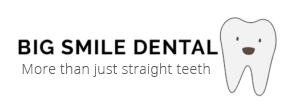
Many teens and adults, at a certain point in their life, need to have their wisdom teeth extracted. While it is pretty common for individuals to do so, there are many other reasons why extraction of teeth is necessary.
From severe tooth decay to infections and crowding, tooth removal is necessary when the consequences of dental disease will affect the individual’s day-to-day living. Additionally, if you are considering getting braces done, it is also possible that you might need to extract a couple of teeth to allow space for the other teeth to shift to the correct position.
The tooth extraction may be initiated by a dentist, or an orthodontist may recommend that teeth be extracted. Tooth extraction is a relatively quick and easy procedure that is done under local or general anaesthetic. While it is generally straightforward when removing teeth that are visible to the eyes, some procedures are a little more complex, especially when dealing with less accessible teeth, such as broken or impacted teeth.
How is tooth extraction conducted?
Tooth extractions can be surgical or simple, depending on whether the affected teeth are visible or not.
- Simple tooth extractions: For this procedure, you will first get local anaesthetic injected into the gum, which numbs the area around the affected tooth so you will not feel much pressure or pain during the extraction process. An elevator may be used to aid in loosening the tooth. After which, forceps are engaged to grasp and remove the tooth.
- Surgical extractions: For this procedure, you will first get an injection of local After you have become numb, the dentist then makes a small incision by cutting into your gum. The gum is then peel aside partially to expose more of the tooth. Some bone around the tooth may need to be removed before extracting the affected tooth.
Extracting teeth for braces
Extracting teeth is usually a last resort, when the affected teeth cannot be saved. When you require braces, the orthodontist usually evaluates the need to extract any teeth, given your unique situation. As with any procedure, your orthodontist will discuss with you the available choices. It is crucial for you to know the necessity for tooth extraction, the alternative solutions, and the desired result at the end of the whole procedure.
- Overcrowding: When you have overcrowded teeth, it leads to teeth protrusion, displacement, irregularity, or sometimes, impaction. It is common to extract one or more teeth, depending on the severity of the overcrowding, to allow space for the rest of the teeth to move into place. This procedure is highly effective for individuals below the age of 14 as their jawbones are not as hard, making it easier to manipulate the teeth.
- Repositioning of the jaw: In cases where there is an overbite or underbite issue, or if the bite is significantly off, removing one or more teeth may be necessary to rectify the issue.
Sometimes, before gaining something better, you need to let go of certain things. Such is the case in the process of achieving a straighter and more beautiful smile. Braces can only do so much. If the root cause of your teeth misalignment (e.g. crowding) is not solved, it cannot be corrected by just putting on braces. Hence, the need to extract affected teeth.
What next?
Once the braces are installed, the teeth will be shifted under the guidance of the braces, filling up the space created by the extraction of the teeth. Every single step of the process is thoughtfully considered, planned, and executed. Your braces process might take anywhere from a couple of months to even years for your teeth to be realigned. However, at the end of the day, you will achieve an attractive smile.
Teeth extraction alternatives
As mentioned earlier, teeth extractions are usually the last resort. There are other techniques that orthodontists typically consider first to make space. One of which is palate widening, which involves using a special maxillary expander to adjust and separate each half of the upper jaw to create more space in the jaw.
Space can also be obtained by moving teeth to the back of the jaw. This can be achieved through the use of headgear or mini-implant screws that provide the anchorage to pull the teeth backwards.
If only a small amount of space is required, teeth can be recontoured using diamond abrasives to remove some tooth enamel; enough to give a few millimeters of space for aligning the teeth.
Conclusion
While some may require teeth extraction before getting braces, it is not a hard and fast procedure for braces. There are, after all, alternate solutions that might be a better choice. At the end of the day, it is all about discussing the best-suited solution for your specific needs. If you want perfect teeth, we can discuss whether that is achievable with you at BigSmile Dental Clinic. We offer some of the most affordable Invisalign braces cost in Singapore, as well as aesthetically pleasing braces solutions, such as lingual braces. For more information, visit us at https://www.bigsmile.com.sg/ today!
